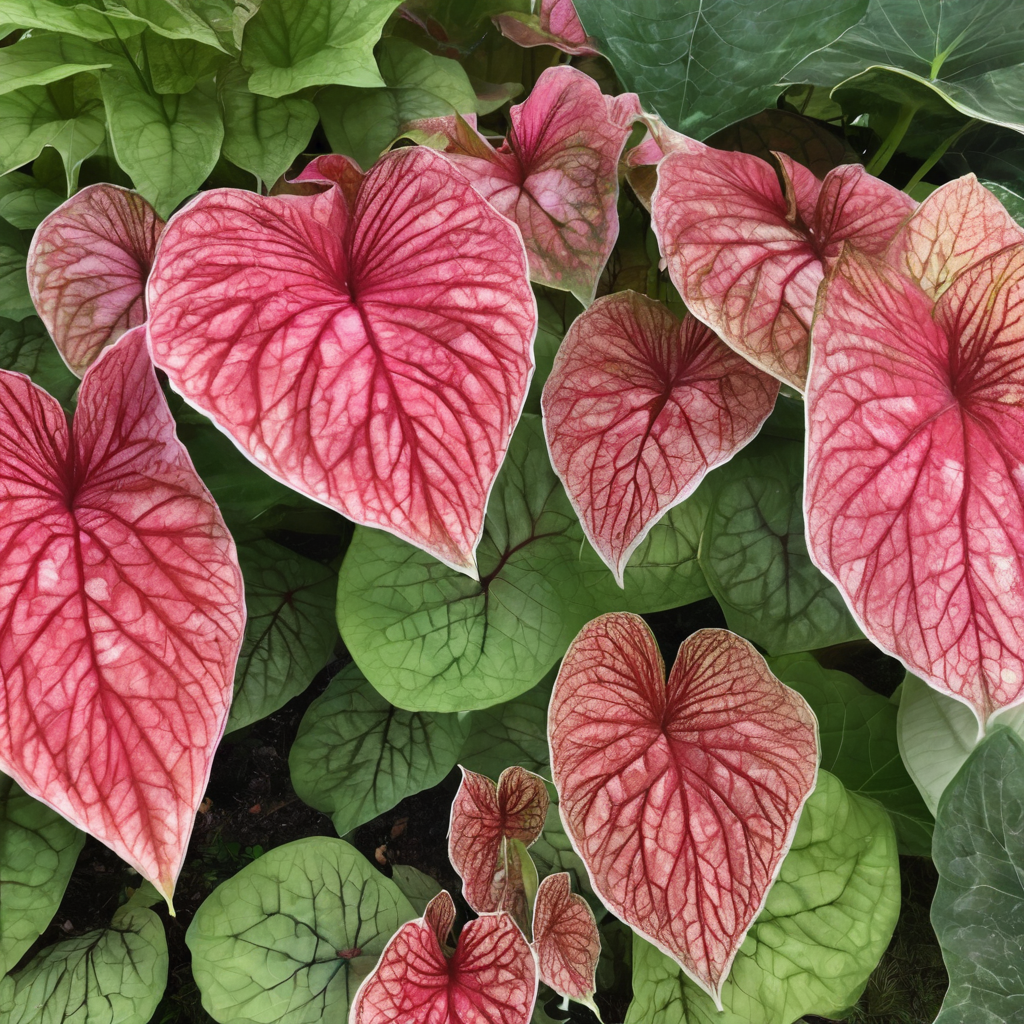Caladiums are a staple of many gardens and container displays for their colorful heart-shaped leaves. But these tropical beauties have some specific care needs compared to other common plants. By understanding their preferences and requirements, you can keep caladiums happy and healthy all season.
How to Grow and Care for Caladiums
Light:
Caladiums thrive in bright, indirect light. Direct sun can scorch their leaves, so partial shade is ideal. They do well under trees or on porches. Provide at least 4 hours of morning or dappled light. Too little light results in pale, leggy growth.
Related Article: Caladium Leaves Drooping Normal?
Water:
Caladiums require consistently moist soil but poor drainage is their downfall. Water when the top inch is dry, and use a soil with plenty of organic matter to retain moisture without becoming soggy. Never allow the roots to sit in water.
Temperature:
As tropicals, caladiums prefer warm conditions. Daytime highs of 75-85°F are best. At night, keep temperatures above 65°F if possible to prevent leaf drop. They may struggle in temperatures below 55°F.
Humidity:
Caladiums appreciate humid conditions like other tropical plants. For container plants, mist foliage occasionally on hot, dry days. Consider grouping pots together to raise localized humidity levels. Pebble trays can also boost humidity.
Fertilizer:
Feed caladiums every 2 weeks through the growing season with a balanced, water-soluble plant food. Too much nitrogen results in lush foliage but few blooms. Too little yields pale growth. Aim for an N-P-K ratio around 10-10-10.
Pruning:
Deadhead spent blooms to encourage reblooming. Cut back any leggy growth after the main flush of blooms. In the fall, cut plants back by half before the first frost to encourage bushier regrowth the next season.
Pests:
Watch for spider mites, aphids, and mealybugs which can cause leaf drops. Isolate infected plants and treat them with insecticidal soap or neem oil. Consider preventative sprays if growing caladiums indoors.
Propagation:
Divide caladium bulbs in spring or fall. Cut tubers into sections with at least one eye each. Replant immediately in moist soil. New tubers will form at the end of the season.
Winter:
Lift tubers before frost and cure them for 2 weeks in a warm, dry spot. Then store in peat or vermiculite at 55-60°F over winter. Replant in spring once nighttime temps are above 50°F consistently.
With the right growing conditions and care, caladiums reward gardeners with vibrant foliage displays all summer. Following these tips will keep them thriving season after season.
